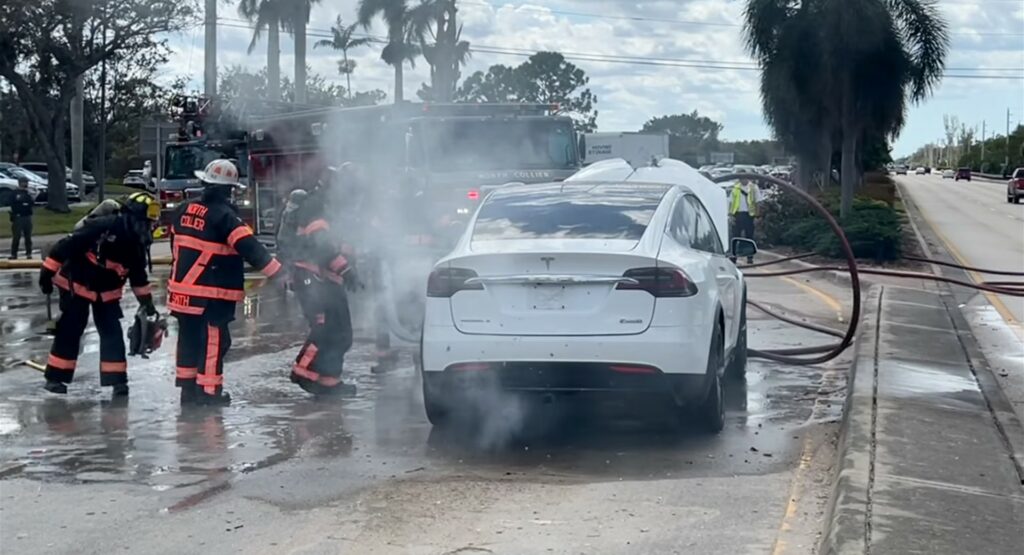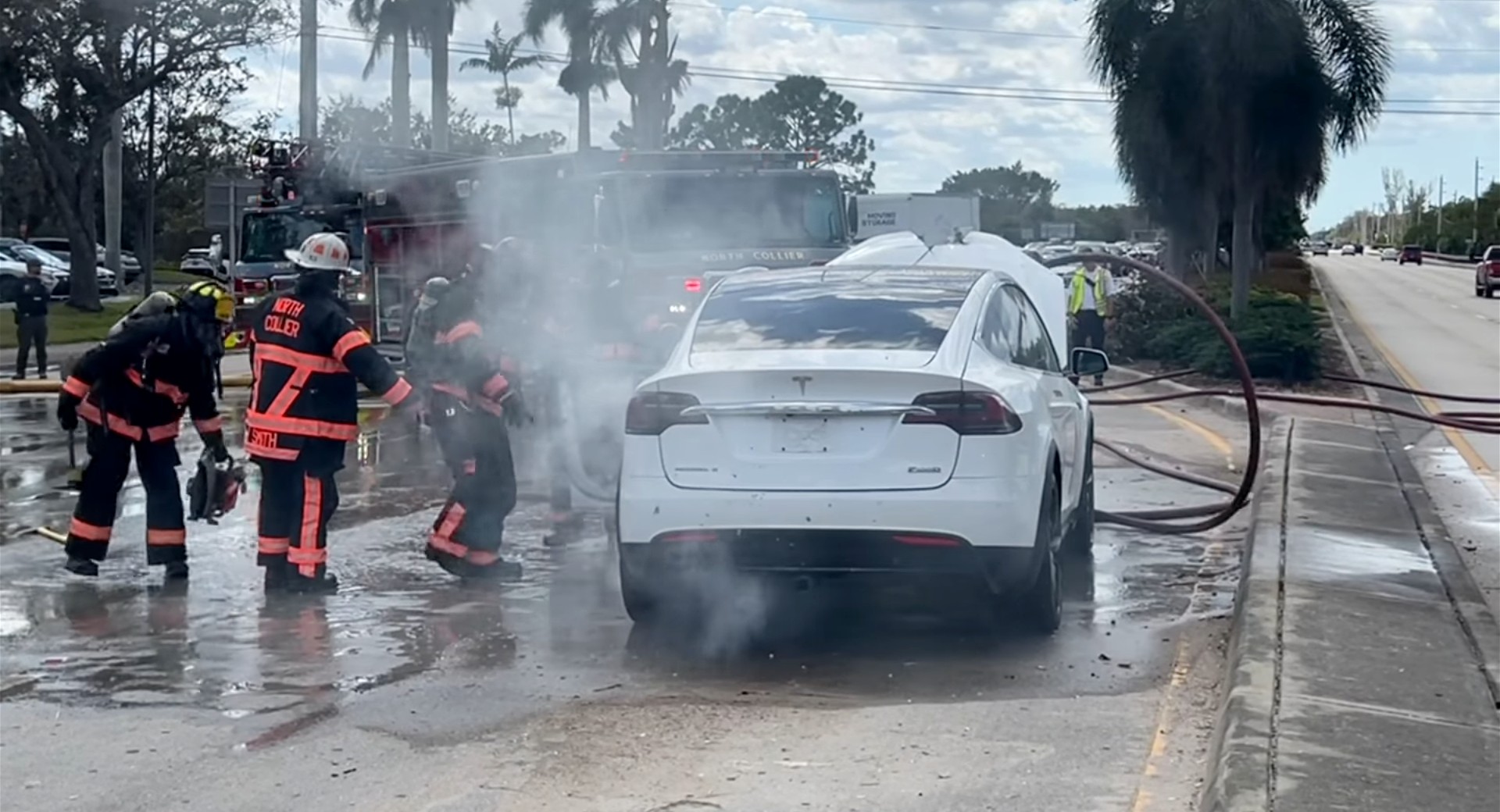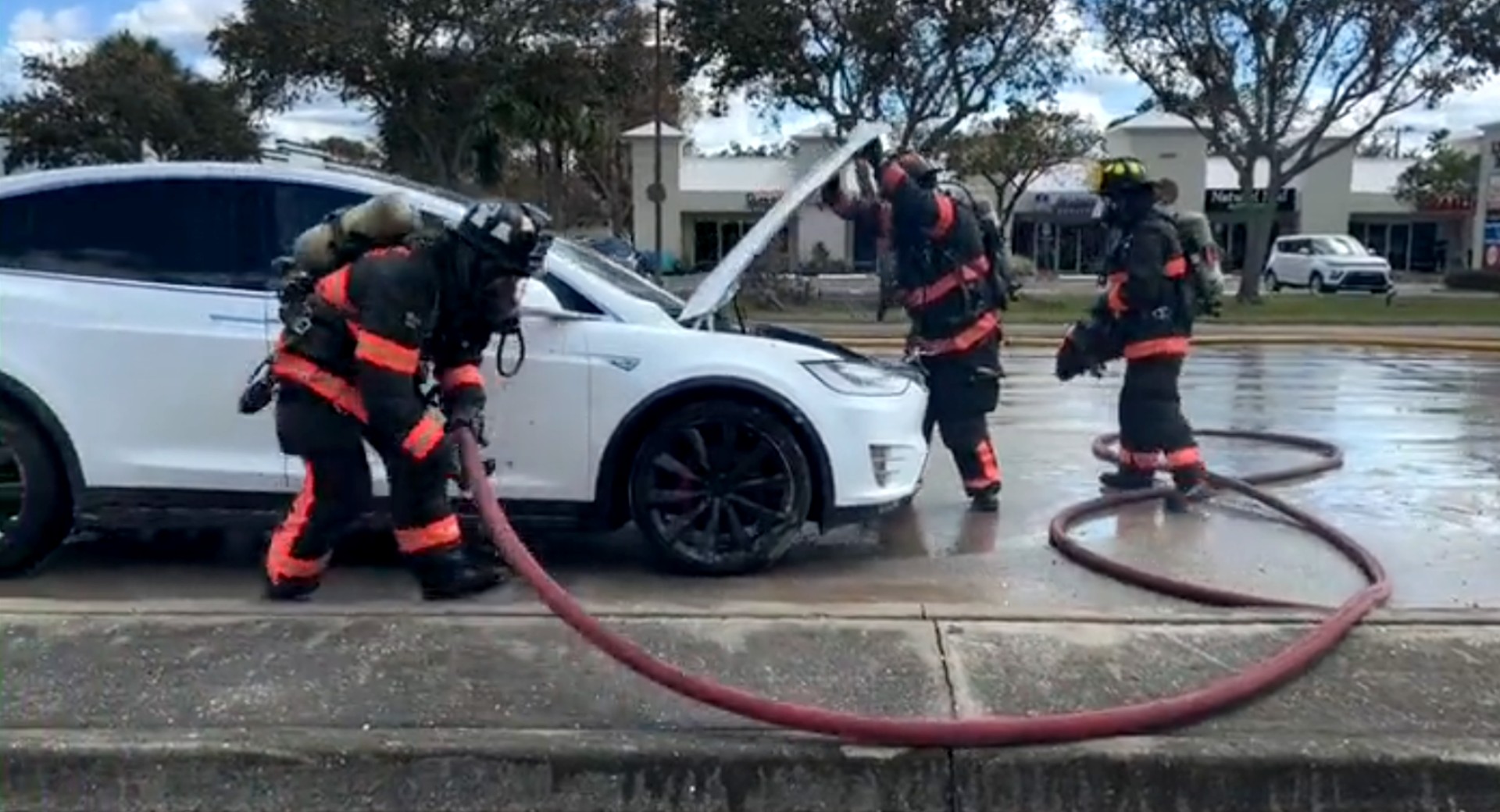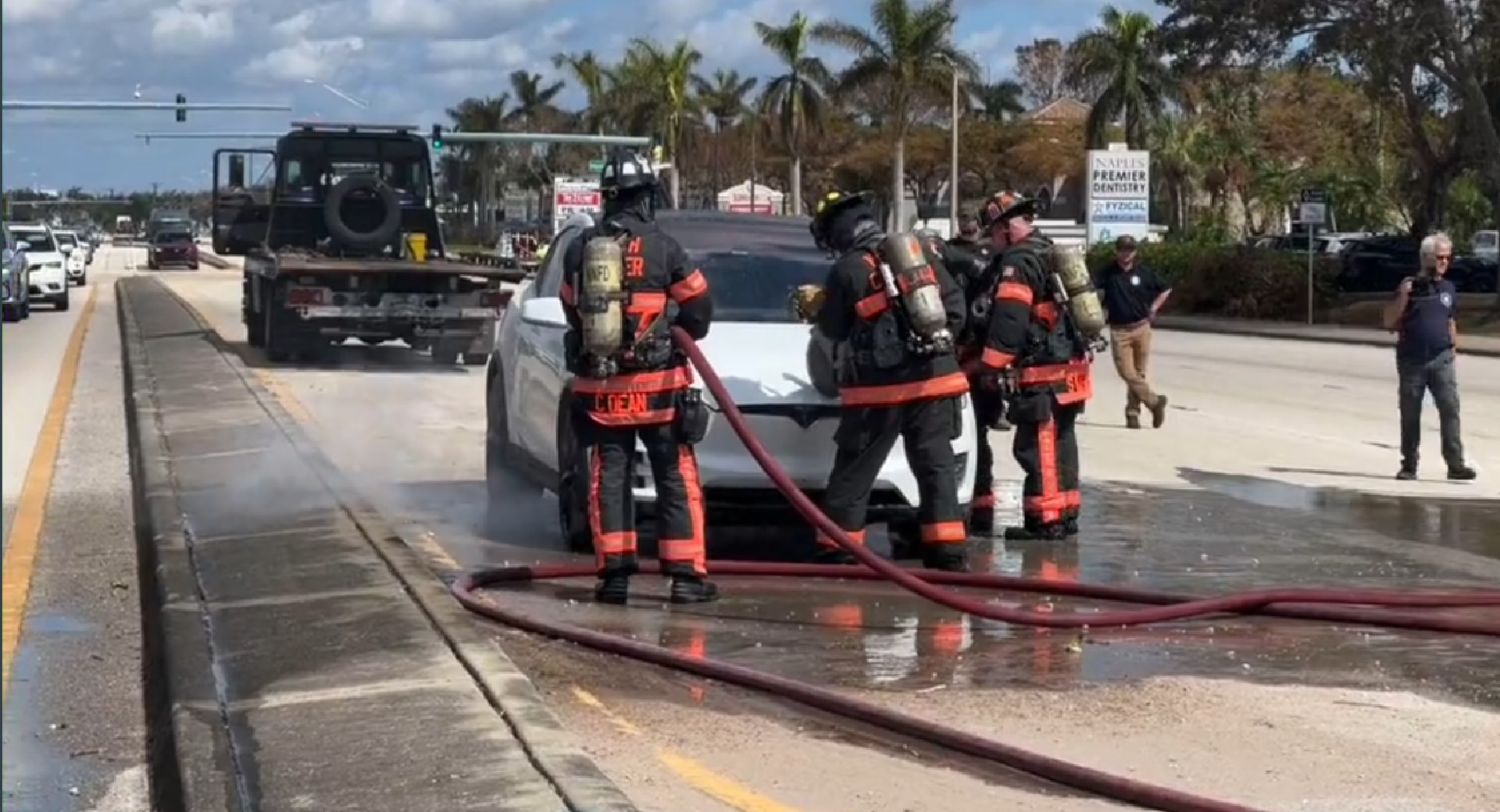A large number of EVs caught in the path of Hurricane Ian could have their waterlogged batteries erupt into flames, causing serious problems for firefighters since they require special training in order to be dealt with. Jimmy Patronis, Florida Chief Financial Officer and Fire Marshal, used his Twitter profile to warn about the EV-related challenges in the aftermath of a natural disaster, after being called to the scene of an incident by North Collier Fire Rescue (NCFR) forces.
Patronis’s posts were accompanied by videos showing how hard it is for firefighters to deal with a Tesla Model X fire in the middle of the street. In the background, we can hear a bystander stating that 1,500 gallons of water had already been poured on the smoking Tesla. As noted by the state fire marshal, putting out a battery fire requires “special training and understanding of EVs”. The NCFR acknowledged the difficulty of the situation with another post on Twitter.
See Also: Tesla Model X Somehow Falls Into A Marina, Starts Releasing Bubbles And Smoke On The Water
It takes special training and understanding of EVs to ensure these fires are put out quickly and safely. Thanks to @NCFRPio for their hard work. #Hurricanelan pic.twitter.com/oN0RvQTG2U
— Jimmy Patronis (@JimmyPatronis) October 6, 2022
According to a recent study by AutoInsuranceEZ, hybrid vehicles are more sensitive to fires with 3,474 fires per 100,000 units, followed by combustion-engined vehicles with 1,529 fires per 100,000 units. Electric vehicles are safer by a large margin, with only 25.1 fires per 100,000 vehicles, although this kind of fire is significantly harder to extinguish. Due to the corrosion in different cells of the lithium-ion battery, an electric vehicle could emit smoke and flames for prolonged periods of time, even after being flooded with water.
While this is not the first time EVs are caught in a hurricane or other water-related natural disasters, the CFO described it as “a new challenge that our firefighters haven’t faced before. At least on this kind of scale”. Indeed, the number of EVs on the roads has been increasing in the past few years. As reported by The Epoch Times, the most recent data from the Department of Energy shows that Florida has the second-highest number of registered EVs in the United States, behind California. More specifically, in December 2021 there were 95,000 EVs in Florida, and 563,070 EVs in California.
The Biden administration is offering incentives for EVs while investing heavily in infrastructure, targeting half of the new vehicles sold in 2030 to have zero-emission powertrains. While this would help drastically reduce emissions in 2030 by 50-52 percent compared to 2005 levels, some believe that the world might not be ready for such a large number of EVs on the roads.
Thank you @bob_rommel we appreciate your willingness to be on scene so you could see first hand how difficult these fires are to extinguish https://t.co/hndPL2ZDct
— North Collier Fire Rescue (@NCFRPio) October 6, 2022
Screenshots by Jimmy Patronis







